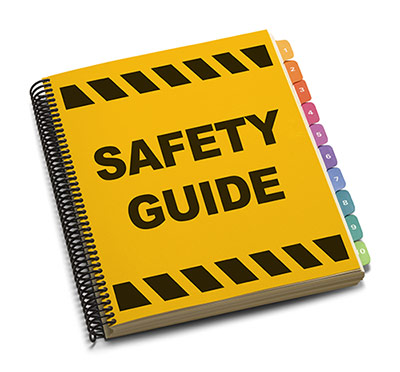
A written safety plan is key to maintaining a hazard-free workplace.
This article is from the June 2015 issue of the IC Safety newsletter. To view the full issue, visit the IC Safety archive.
Each year we experience claims where a lack of written safety procedures and effective training were contributing factors to a major loss. Losses in turn have a negative impact on your company's claims history and lost production time. As a result, you could be paying higher insurance premiums and out-of-pocket costs than your peers!
Actual examples of preventable losses:
- A driver was unloading large packages at a residence. The load slid off the back and landed on top of the helper, who suffered major crush and fracture injuries to the lower body.
- A worker was injured performing vehicle maintenance and OSHA cited the contractor in violation of 29 CFR 1910.147 (lockout/tagout), which could cost the owner up to $70,000 in OSHA fines alone.
You may not have a commercial office space or your own maintenance shop, but you should have written programs that address the following at minimum:
- Safe vehicle operation
- Proper lifting/carrying techniques
- Control of slip/fall exposures
- Safe use of tools and equipment including hand trucks
- Warehouse and dock safety
- Post-incident root cause analysis
Safety programs are only as effective as you make them!
People usually define the effectiveness of a safety program by the frequency and severity of injuries and collisions. However, a crucial measurement of a safety program's effectiveness is the commitment from everyone within an organization to make their workplace free of known and recognizable hazards. Safety must permeate your organization from the top down.
Don’t just take our word for it.
According to the National Safety Council, "managing safety starts from the premise that most incidents can be prevented. They can be prevented with proper hazard identification and evaluation, management commitment and support, preventive and corrective procedures, monitoring, evaluation and training."
Categorized in:
-
Injury Prevention
-
Driver Management
-
Dock & Warehouse Safety
-
Workplace Safety
-
Slips & Falls
-
Driving Techniques
-
Transportation Safety
ClickToAddCategories
No categories have been created yet.
Community
Company Updates
Driver Recruitment
Investor News
Transportation Safety
Claims
Driver Management
Driving Techniques
Distracted Driving
Seasonal Driving Tips
Sharing the Road
Health & Wellness
Injury Prevention
Regulations
Security & Cargo Theft
Vehicle Inspections
Weather Conditions
Workplace Safety
Workers Compensation
Done